How British backpacker Paul Onions helped convict Ivan Milat
There were no spare seats for four months in the public gallery of the old Banco Court on St James Road while the horrors of Belanglo and the dramas within Milat’s hillbilly family were laid bare. Janet Fife-Yeomans had a front-row seat.
True Crime
Don't miss out on the headlines from True Crime. Followed categories will be added to My News.
It was day eight of Ivan Milat’s murder trial when he bowed to the inevitable.
In the face of overwhelming evidence, he admitted that the huge volume of camping gear seized by police at his Eagle Vale home and the homes of three of his brothers, Richard, Wally and Alex, had belonged to some of the backpackers he was on trial for slaughtering.
The question he had to explain was how the sleeping bags, tents, backpacks, water bottle and other incriminating items got there — apart from the ridiculous claims he had been framed and they had all been planted by police or someone else.
A month later, part of that question was answered as Ivan’s sensational defence was revealed to the jury.
He had not one but two people lined up to be a patsy, two people to point the finger of blame at — his younger brothers Wally, then 44, and Richard, then 40.
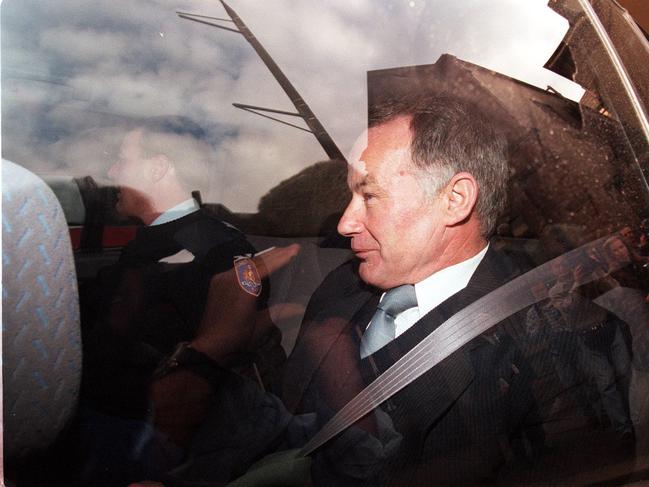
Ivan’s barrister, Terry Martin, would later tell the jury that “blind Freddie” could see that someone in the Milat family had committed the murders and “it could well be Richard Milat with Walter Milat or Richard with a friend of Richard’s or any combination.”
Ivan did not have to prove it was Richard or Wally, just create doubt in the minds of jurors who rejected the argument Milat’s brothers were involved.
Ivan did not have to prove it was Richard or Wally, just create doubt in the jurors’ minds
Crown prosecutor Mark Tedeschi QC had anticipated such a line of defence. There was certainly evidence Milat had not acted alone in abducting and killing the seven backpackers in the Belanglo State Forest between December 30, 1989, and April 18, 1992.
MORE:
Milat’s deadly path inside Belanglo Forest
Milat family still in denial about guilt
Cops believe Milat behind unsolved murders
How would one man alone have subdued two backpackers at the same time, particularly the male and female couples of James Gibson and Deborah Everist, both 19, from Victoria, and the powerfully-built German Gabor Neugebauer 21, and his girlfriend Anja Habschied, 20? Psychiatrists had pointed to the fact that some of the young people were shot, others stabbed “raising the possibility of there being two offenders,” as forensic psychiatrist Ron Milton said in his report.
The bodies in the dual murders were separated from each other which could have been because one offender was embarrassed about raping their victim in the presence of the other offender, Milton said.
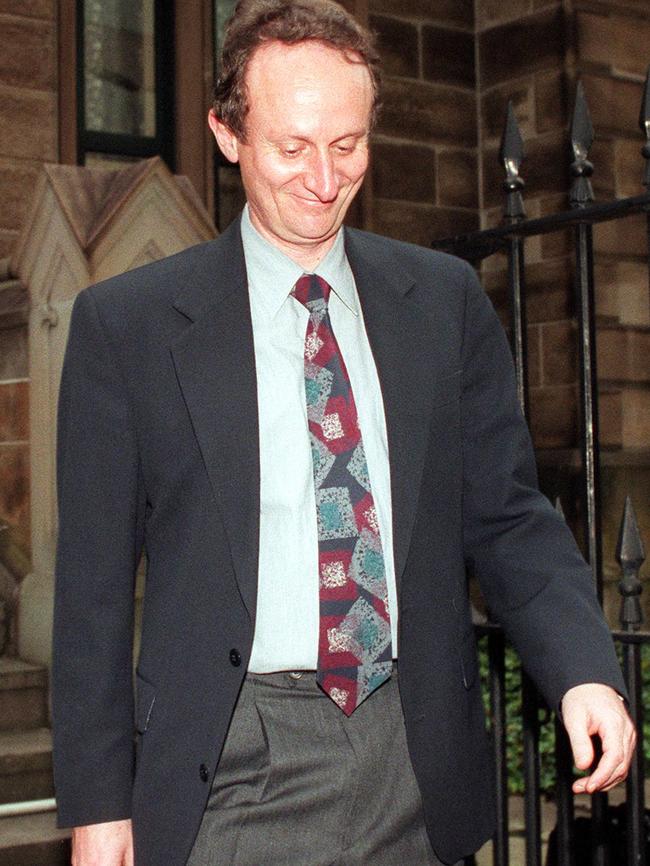

So when he opened the case for the prosecution on March 26, 1996, Tedeschi covered his bases by telling the jury that Milat may not have been acting alone.
“The Crown says it does not have to prove in this case whether or not the accused acted alone in the course of these killings,” the veteran prosecutor of countless murder trials said.
“The Crown says either the accused did it himself, did the acts himself, or alternatively, the acts were done by him with others in a joint enterprise for which he was responsible.”
Tedeschi said the murders were for Milat’s psychological gratification “killings for killings sake”.
Those who had queued since early morning for one of the limited seats in the public gallery in the old Banco Court on St James Road in the centre of Sydney knew they were watching history.
There was not a spare seat for the next four months while the horrors of Belanglo and the dramas within Milat’s hillbilly family of 14 including two older and seven younger brothers were laid bare.
When the court adjourned for lunch at 1pm, the queue immediately began again for the afternoon session at 2pm.
The prosecution had no confession and no eyewitnesses to the murders. Who they did have was the one who got away, British engineer Paul Onions. He was called as the first witness for the prosecution, the one who could point the finger at Milat.

In a crisp suit and tie, the slightly-built Onions, then 29, told how he had accepted a lift as he left Lombardos newsagency along the Hume Highway at Casula on January 25, 1990 heading for Mildura. The driver with the moustache like cricketer Merv Hughes had introduced himself as Bill. Just over the small hill on the highway past the Berrima turn-off, “Bill” pulled the Nissan Patrol over and got out, saying he needed to get some tapes. Less than a kilometre further on is the turn off to Belanglo.
He said Milat pulled a gun on him and said: “Do you know what this is? This is a robbery?”
“I was starting to take my seatbelt off and he said ‘put that seatbelt back on’. I started to put it back on and lent under the driver’s seat again,” Onions said.
He told the jury that Milat pulled out a bag with ropes sticking out.
“That scared me more than the gun,” Onions said.
He leapt from the car and fled back along the highway with “Bill” in pursuit. He fired a shot and grabbed Onions by the shirt. Onions jumped into the road in front of the next vehicle that came by and the van stopped and took him to the police station.
He said he turned back and saw “Bill” “standing there, smiling, looking at me. It was a lasting impression”.
“”If you saw that person in the courtroom now would you be able to identify the man who was the driver of the car?” Tedeschi asked him.
“Can you look around the courtroom and say if you see that man?”
Onions indicated at Milat in the dock just a metre away from the witness box: “It’s the guy there.”

Milat stared back, locking onto his gaze, that same “smile” on his face. It’s wasn’t really a smile but the unfortunate expression as Milat’s top lip didn’t cover his teeth.
Before Milat’s concession that the camping gear belonged to some of the backpackers, he piled on the grief of their families by making them give evidence to identify the individual items. Such is the layout of the courtroom, the two grey-haired mothers, Patricia Everist and Margaret Gibson, had to walk within less than a metre of Milat sitting in the dock as they walked to the witness box to tell of when they last saw their children.
Mrs Everist also identified a green sleeping bag found in a wardrobe at Milat’s home as being the same as that owned by her daughter Deborah.
If he had extended his right arm, Herbert Schmidl, could have smashed his daughter’s sadistic killer in the face. The German bus driver from Regensburg had been called to identify some of his 21-year-old daughter Simone’s gear.

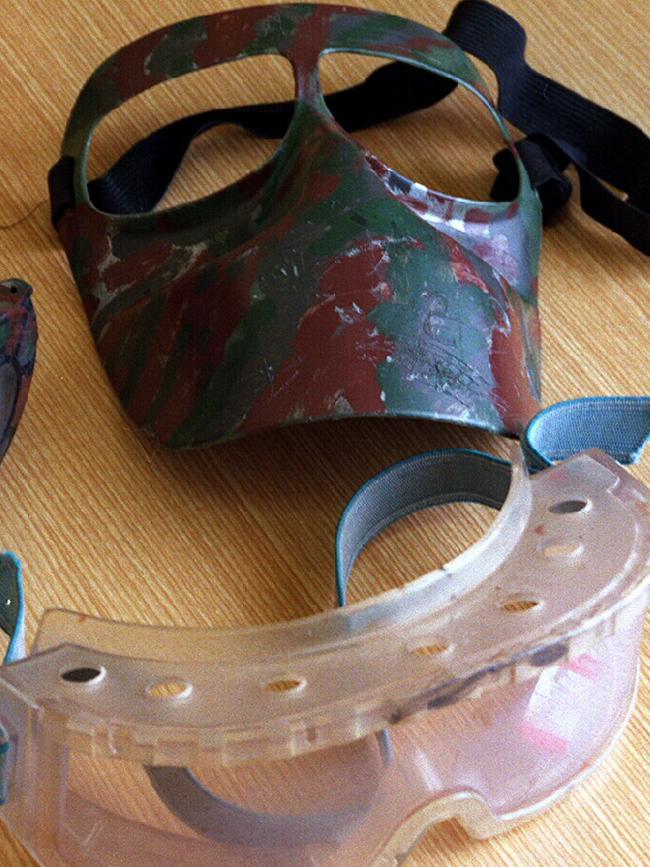
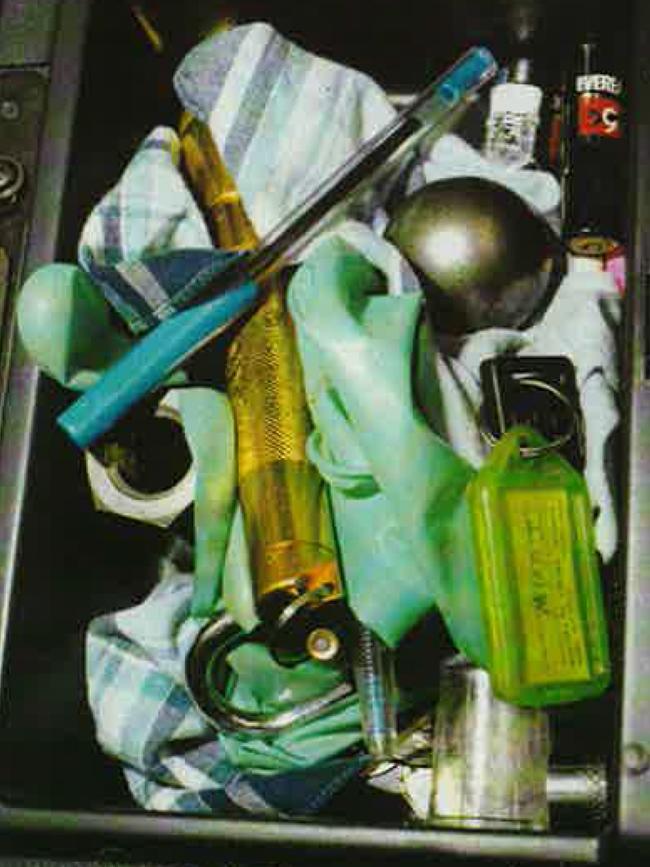

It was one of the images of the trial implanted in the memory of everyone who saw it as he clenched his right fist, gritted his teeth and whispered a German expletive to Milat as he passed by him as he left the witness box to head out of the court.
Mr Schmidl’s distress and fury were palpable as was his self-restraint as the jury watched on.
There was not a day during the marathon trial when his victims were not represented in court by their families. After they had given their evidence, the parents and siblings took their reserved seats in the public gallery. The worst of their ordeal was to come as the pathologist who carried out the post mortems on all seven of their children, Dr Peter Bradhurst, was called on to tell the jury how they died. There was no easy way to describe their final moments.
Olga Habschied fled from the court sobbing when she heard that her daughter Anja was decapitated with one blow while she was still alive. Her husband Norbert had tried to spare her the details but she learned of them through a German interpreter sitting next to her in the public gallery and interpreting the evidence for her as it unfolded in court.

Bradhurst said the blow had come from the back of the neck while her head was flexed onto her chin in what he called a “style of ceremonial execution”. No other injuries were found but she was naked from the waist down. Her halter neck top was ripped and torn in the neck area and her head has never been found.
The murder weapon would have been a machete, axe, large knife or sword, possibly the long curved sword found at family matriarch Mrs Margaret Milat’s home, he said.
Her boyfriend Neugebauer had a gag “stuffed” inside his mouth and another gag tied around his head. There was evidence of strangulation and he had been shot six times in the head with .22-calibre bullets.
When the court heard that British backpacker Joanne Walters, 22, had been paralysed with a stab wound through her spine and other wounds which penetrated her larynx and windpipe, her mother, Gillian Walters, rushed outside the court and vomited.
The courtroom was silent as Joanne’s navy blue T-shirt was displayed on a large white board showing 15 cuts concentrated around the upper back and neck, two cuts to the front in the chest and three cuts to the right sleeve. Her briefs were missing and she had been strangled.
The body of her travelling companion, Caroline Clarke, 21, was found with a maroon coloured sweatshirt tied around the head with a number of holes in it. When it was removed, two metal fragments were found attached to her skull. Bradhurst found 10 bullet entry wounds to her head and four bullets inside her brain tissue. They came from three different directions including into the top of her head.


Clarke also had two wounds to her back and one to her chest. There was evidence both girls had been sexually assaulted.
James Gibson’s father and brother listened in court to the evidence he was found lying in a foetal position. The fly zip on his jeans was down although the top button was fastened. Bradhurst had found nine cut marks to the centre of his chest and one through the top of his spine causing paralysis.
Patricia Everist and her son Timothy heard Bradhurst give evidence that Deborah had probably been hogtied in a “bondage” scenario. Her skol and jaw were fractured, the stab wound through the back of her chest would probably have penetrated her heart and there were four slicing wounds to her head.
Simone Schmidl, who had been travelling alone to Melbourne to meet her mum who was flying in from Germany, had suffered multiple stab wounds including one through the top of her spine causing paralysis. She had possibly been gagged and there was evidence of sexual assault.
Jurors could be seen looking directly at Milat when Bradhurst said the knife used in the attacks on Walters, Clarke, Gibson, Everist and Schmidl were possible the same with a blade of 30mm wide.
The examination of the evidence from the forest and from some of the Milat homes was a forensic tour de force. There were almost 400 Crown exhibits, a web that pointed to Ivan at its centre. The evidence was methodical, even pedantic, but everyone in court waited on every word.
Sash cords found in Ivan’s garage were stained with Clarke’s blood showing she had been tied up. The bolt of a Ruger 10/22 rifle found in a wall cavity at Ivan’s house had fired the spent cartridges found near the bodies of Clarke, Habshied and Neugebauer. The rifle bolt was in one of his boots in the hall cupboard.

Among the “trophies” he had kept from his victims was a 20p piece probably from the British girls found in the console of Milat’s four-wheel drive. Indonesian money kept in his bedroom drawer after Neugebauer and Habschied had backpacked there before travelling to Australia. The New Zealand money from Schmidl who had visited that country before Australia.
The evidence was that Ivan was off work on each of the days the backpackers went missing.
One of the three star witnesses after Paul Onions was Milat’s girlfriend, Chalinder Hughes, a divorced vegetarian Milat’s family sometimes “Cylinder”. She was there because had a photograph of her wearing the green and white striped Benneton top belonging to Clarke. Hughes, who Hughes, who had been introduced to Milat by his sister Shirley Soire, had visited him in jail every weekend since his arrest two years earlier.
The quietly-spoken public servant showed a flash of anger in the witness box when she denied the photograph was taken in 1992, the year Clarke was murdered. She said she believed it was 1994, despite the date on the back saying “92”.
“I do not like to be intimidated. This is very hard for me. My conscience is clear,” she fired back at Tedeschi.
At the end of the second month of the trial of Australia’s worst serial killer came news of the country’s worst massacre as 35 were killed by gunman Martin Bryant at Port Arthur in late April. It was the worst of times.

Back in the old Banco Court in early May, the jury got to know the brothers Wally and Richard as the trial moved into its “whodunit” phase.
Wally Milat turned up at court clean shaven and as a witness for the prosecution — which meant Ivan’s barrister Martin could cross-examine him. Tedeschi started to circle the wagons.
“Did you play any part in the deaths of any of the seven backpackers whose bodies were found in the Belanglo State Forest?'' Tedeschi asked him.
Walter replied firmly: “No.”
Among the large number of weapons and ammunition found beneath Wally’s Hilltop home were axes and 21 knives as well as Anschutz rifle which was linked to spent cartridges found near the bodies of two of the German victims.
Mr Tedeschi asked whether Wally had ever fired at anyone in the forest using an Anschutz rifle or been present when anyone else was shooting at any people. To both questions he answered: “No.”
Damningly for Ivan, Wally said that all of the incriminating weapons and equipment found under his house had been moved from Ivan’s house in the weeks before his arrest.
Now Ivan’s “Merv Hughes” moustache moved into centre stage. His barrister Terry Martin quizzed Wally about his denial that he had such a moustache in January 1991 when Onions was threatened. Wally admitted he knew Lombardos newsagency but denied he planted guns at Ivan’s house.
Tedeschi took over: “Would you lie for your brothers and sisters if it was a serious enough matter?”
Wally said: “Perhaps, yes.”
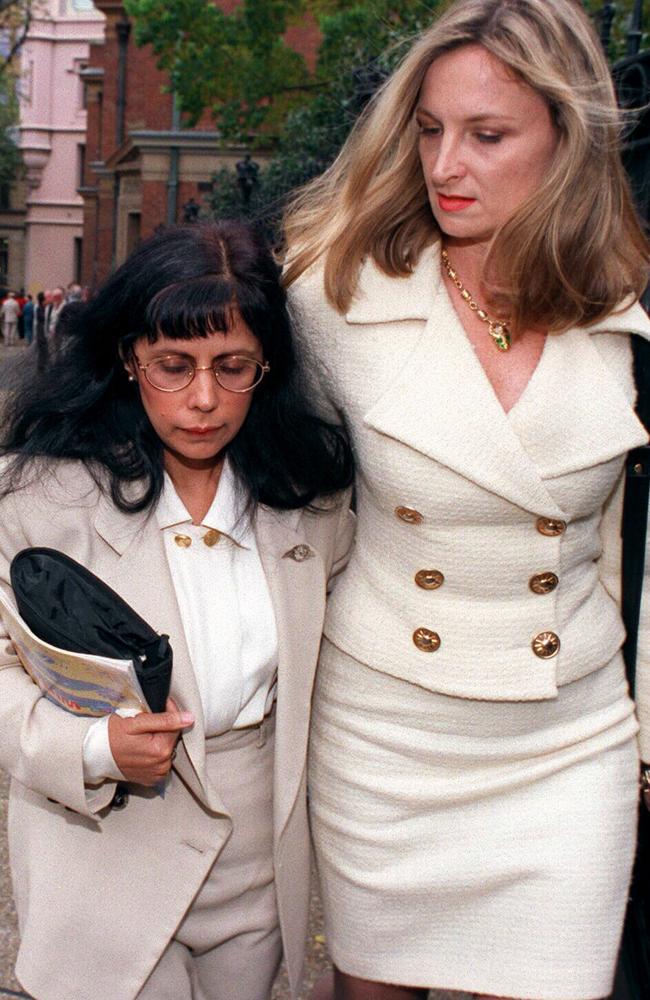
Richard Milat turned up at court sporting a freshly-grown moustache although nothing like Merv Hughes.
“Have you deliberately come to court to try and give your evidence in a way which is designed with the aim in mind of trying to assist your brother Ivan Milat?” Tedeschi asked.
Richard replied: “No.
Spending most of the day in the witness box, Richard was cross-examined by Terry Martin, denying testimony from one of his workmates at Boral that he had told him “there's more bodies out there, they haven't found them all" before five of seven murdered backpackers had been found.
Richard also denied telling the same workmate "stabbing a woman is like cutting a loaf of bread".
Martin: “In January 1990, would you have had a thick moustache going down the side of your mouth?”
“I couldn’t be sure. Yeah, I couldn’t be sure,” Richard, who said he had different beards and moustaches at different times, said.
On day 64, one of the jurors reported receiving an anonymous phone call at his home from a man who said: “If you find my … Look out, if you find him guilty, you’re dead.” The threat was kept secret from the rest of the jury and that juror was excused. Police traced the call to Queensland but never discovered who made it.
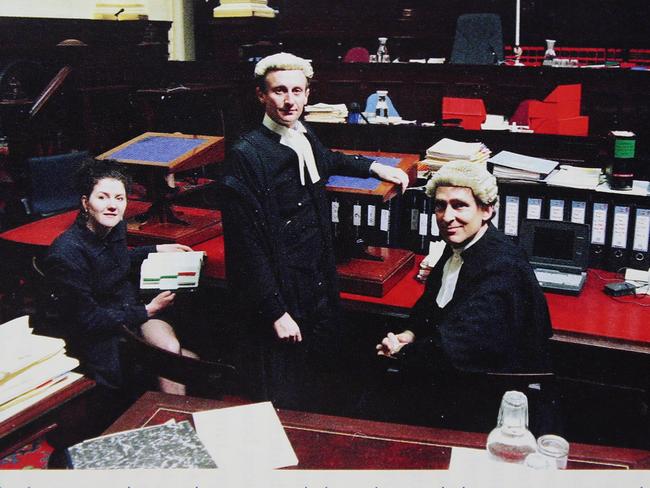
After 10 weeks, Ivan went into the witness box himself with days of denials. He denied having a Merv Hughes-type moustache at the time of Onions’ disappearance but the police had done their job. One of his workmates had found a photograph of him 13 days before Onions was attacked with the exact moustache Onions described.
As the trial moved into final addresses, the public gallery was as crowded as ever.
“Whichever way you look at it, it is absolutely irrefutable that whoever has committed these eight offences must be either within the Milat family or so very closely associated with it, it does not much matter,” Terry Martin told the jury.
“The question is, who is it within the Milat family?”
At 2.24pm on July 24, the jury retired to consider its verdict. When the jury returned with the verdict on the Saturday morning, it was about the same time that swimmer Kieren Perkins won gold at the Atlanta Olympics and a terrorist bomb went off in Olympic Park.
Inside the Banco Court none of that mattered. As the jury foreman stood and returned guilty verdicts to all the eight charges, the emotion in the courtroom was overwhelming.
When he jailed Ivan Milat for life, even the voice of veteran trial judge David Hunt wavered.
Originally published as How British backpacker Paul Onions helped convict Ivan Milat
